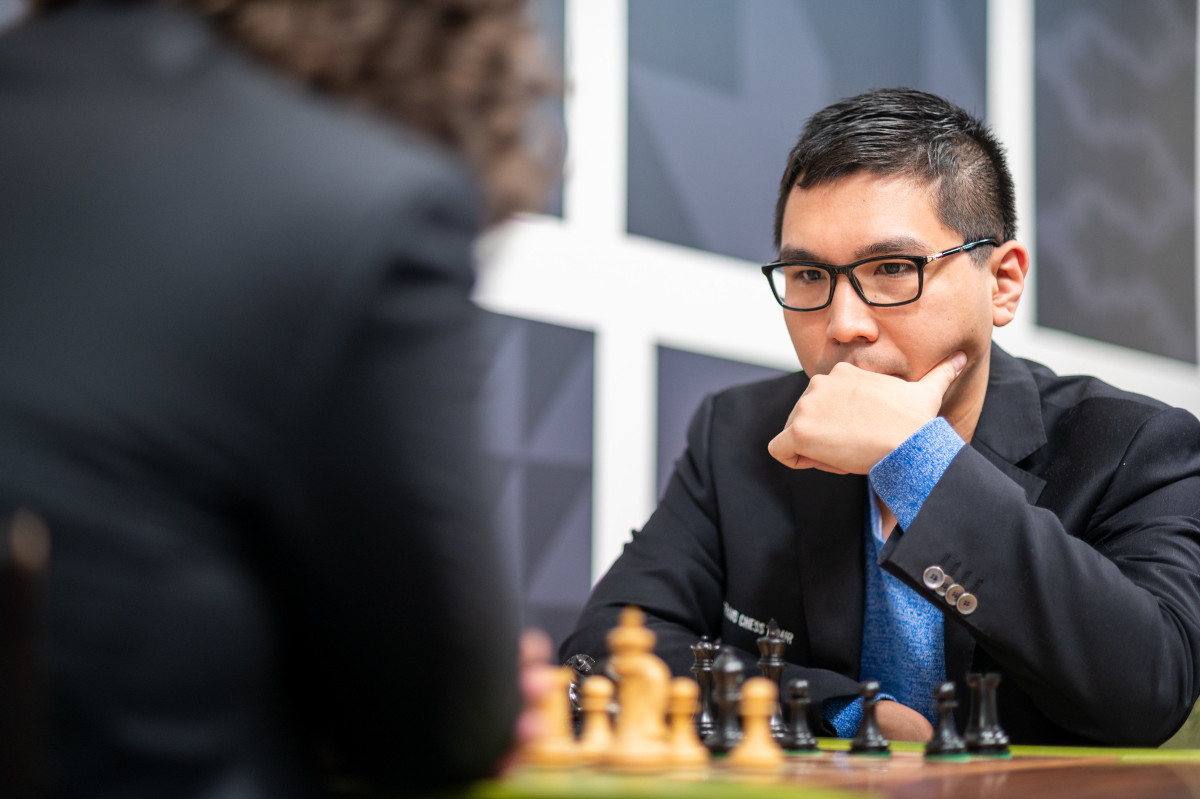Six years later
Wesley So has participated in every edition of the Sinquefield Cup since 2015. In 2016, amid what turned out to be an astounding run of good form, So won the event with an undefeated 5½/9 score and a 2859 rating performance. Six years later, he is the favourite to grab a second title, as he leads the event with three rounds to go.
Since the leader was supposed to face Magnus Carlsen — who withdrew from the event on Monday — in round 7, he will get a rest day on Friday before playing his two final games, against Alireza Firouzja and Leinier Dominguez respectively.
Facing Hans Niemann with black in the sixth round, So played the Petroff Defence and managed to get a favourable position in the early middlegame.
So considered that his opponent’s h2-h4 push on move 20 was not accurate. The engines disagree, but their justification is a tough-to-find variation that required extreme accuracy by White. In the game — between humans — Black got an edge, first psychologically and then in the position, as Niemann, aware of the danger, spent over 20 minutes on move 21.
In the diagram above, Black had just played 22...f6, to which Niemann responded by 23.Bb8, using the fact that the knight on d6 is hanging. So found the correct 23...Kf7 after thinking for 10 minutes, and after 24.g4 Qxb8 25.gxh5 Nf4 26.Nxf4 Qxf4 Black’s advantage was evident, even for the casual audience member.
So had the better structure (after 27.hxg6+ hxg6, White was left with a weak h-pawn), the stronger minor piece and a small initiative.
The rooks soon left the board, and So had the tough task of converting his advantage in the endgame. Lately, the use of computers has resulted in better showings by players on the defensive side of slightly imbalanced positions, and for a while, it seemed like this would be yet another of those cases.
So admitted that in the following moves he “messed it up”, giving his opponent drawing chances while being unable to find an effective winning plan.
The man from Bacoor was still slightly better, but White definitely had drawing chances, until move 42, when Niemann faltered by playing 42.Ke2.
Niemann apparently was busy calculating 42...Bf4 and thought that placing his king on e2 could make a difference in this case, but in doing so he missed Black’s 42...Bh2, which is a powerful resource. Now White is forced to jump with his knight either to f3 or h3, when it would have been better placed to defend the position from e2 (42.Ne2 was the strongest try to keep the balance, in fact).
So swapped the queens, activated his king and went on to grab a 59-move win.
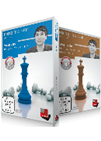 Wesley So published two new opening DVDs: 1.b3, the so called Nimzo-Larsen-Attack, for White and his black secrets in the modern Italian. Get them in a package and save money!
Wesley So published two new opening DVDs: 1.b3, the so called Nimzo-Larsen-Attack, for White and his black secrets in the modern Italian. Get them in a package and save money!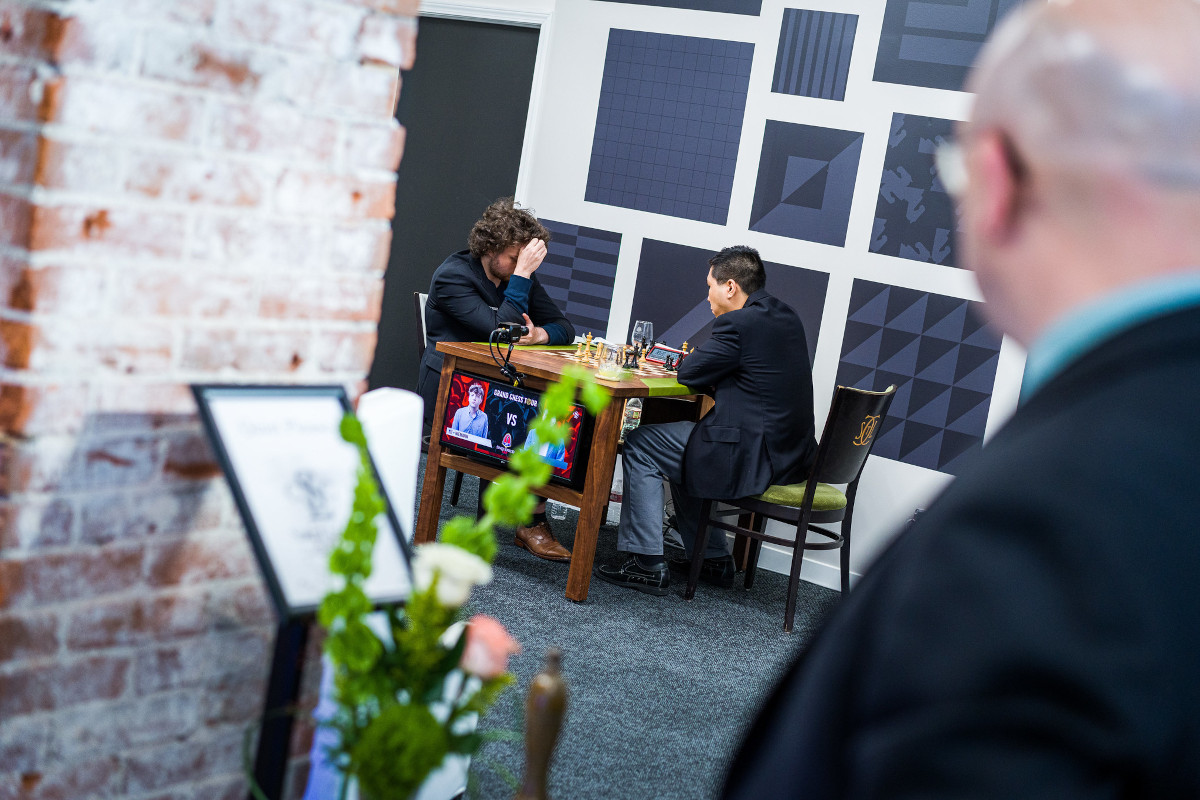
Arbiter Chris Bird following the final stages of the game between Hans Niemann and Wesley So | Photo: Lennart Ootes
Firouzja: “I take it anyway”
Much earlier in the day, Alireza Firouzja had won his game against Shakhriyar Mamedyarov. It was not a clear win, though, as the youngster mixed up the move order in the opening and found himself on the back foot early on.
Shakh reacted with active play and seemed to be on his way to a remarkable victory, as he played the good-looking 19...Bxf2+ to emphasize White’s vulnerabilities in the position.
After 20.Kxf2 Qf5+ 21.Ke1 Qxd5 White played the correct 22.Rf1, and Mamedyarov was faced with the task of creating a plan to convert his positional edge into something concrete.
As noted by Firouzja, Shakh was probably “annoyed” after realizing that White’s position was still playable after the bishop capture on f2. This is a good hypothesis to explain why the Azerbaijani went for the strange 22...Nf8 after thinking for over 20 minutes, when 22...b6 would have kept his advantage without much hassle — the white king is still stuck in the centre and Black will continue to develop his pieces.
Firouzja had survived the opening mishap, and soon after found himself in a winning position, as Shakh could not adjust to the new situation on the board and blundered on move 25.
25...Nd4 is refuted by 26.e3. According to Firouzja, perhaps his opponent thought that advancing the pawn was never possible with the rook on e8. On the contrary, after the text move, Black will need to make major (losing) concessions to save the knight.
There followed 26...Qxa2 27.Ra1 Qe6 and White does not grab the piece immediately. Instead, he has 28.dxe4, winning.
In fact, playing 28.exd4 also wins, but gives Black more counterchances. Firouzja’s final shot was the most precise in the position, and prompted Mamedyarov’s resignation — note that the knight cannot move due to the checkmate on g7.
In the post-game interview, Firouzja was critical of his play in the opening, but also confessed:
With this blunder I cannot be too happy. But yeah, I take it anyway (smiles).
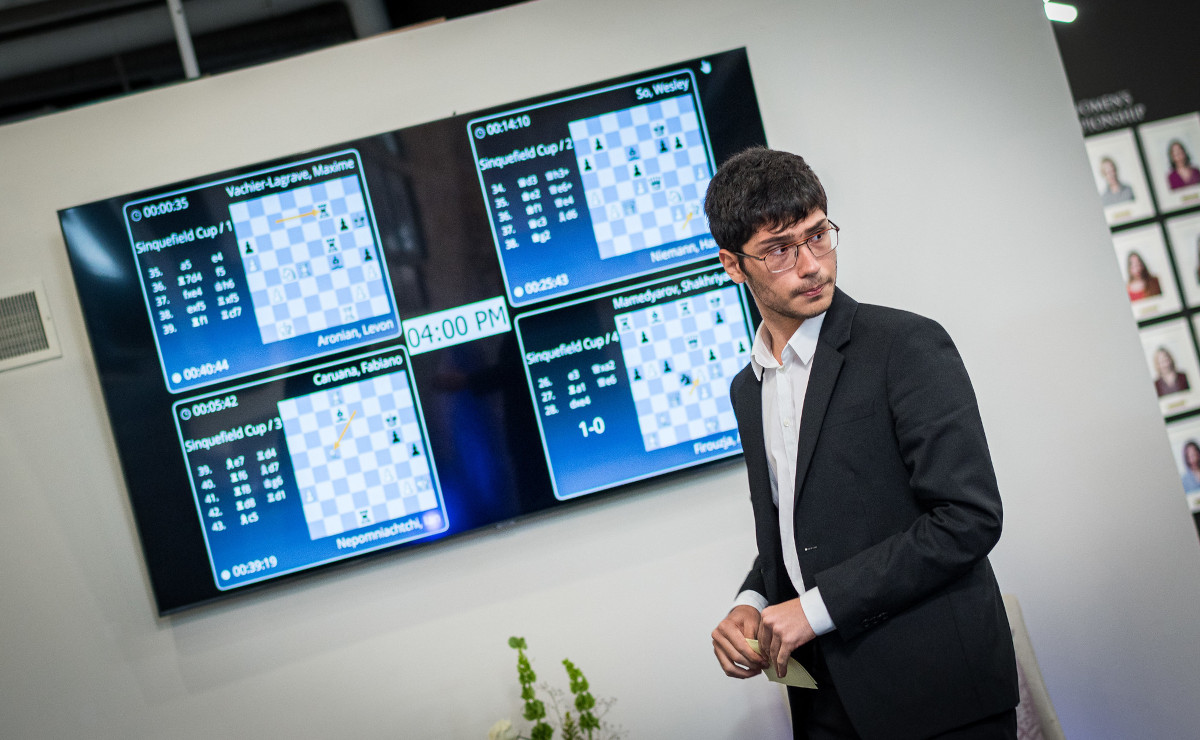
Alireza Firouzja | Photo: Lennart Ootes
Aronian beats MVL’s Najdorf
Levon Aronian grabbed his first win of the event by taking down Maxime Vachier-Lagrave out of a Sicilian Najdorf, i.e. MVL’s pet defence against 1.e4. Aronian got to play a surprising novelty on move 16 — yes, Najdorf’s theory is often that deep!
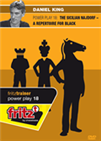 Learn the opening of the masters from one of the world's most popular master trainers! Daniel King shows you a rock-solid and powerful Najdorf repertoire.
Learn the opening of the masters from one of the world's most popular master trainers! Daniel King shows you a rock-solid and powerful Najdorf repertoire.16.Rhf1, placing the rook behind a pawn, is the kind of move that is difficult to explain to a novice player (or even a seasoned club player). The more natural 16.Rhe1, placing the rook on the semi-open file, was in fact played only a month ago by Etienne Bacrot at the French Championships in Albi.
Alejandro Ramirez asked Aronian about this move, of course. After all, MVL spent close to a half hour trying to figure out what were the ideas behind such a mysterious manoeuvre. Aronian confessed that he had not found it, and went on to tell the story behind the novelty.
At the Chess Olympiad in Chennai, Aronian was struggling with health issues, but was nonetheless helping US team captain Robert Hess to prepare Caruana’s opening for his white game against Parham Maghsoodloo. Fabiano was likely to face the Najdorf, and it was Hess who came up with the idea.
The novelty certainly gave Aronian an edge on the clock, while its shock value might have as well affected MVL throughout the game. The Frenchman faltered on move 36 in an uncomfortable yet holdable endgame, and went on to lose the game. Vachier-Lagrave is the defending champion in Saint Louis.
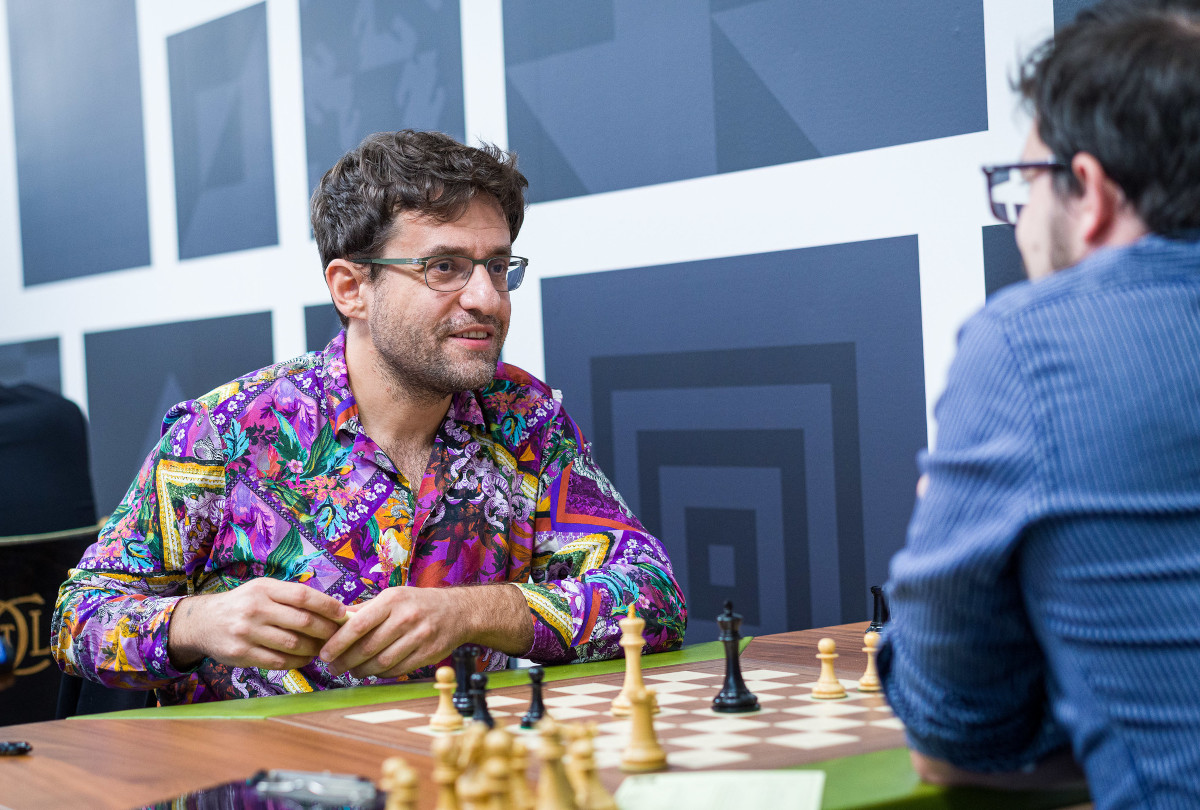
Two good friends — Levon Aronian and Maxime Vachier-Lagrave | Photo: Lennart Ootes
Round 6 results
Standings after round 6
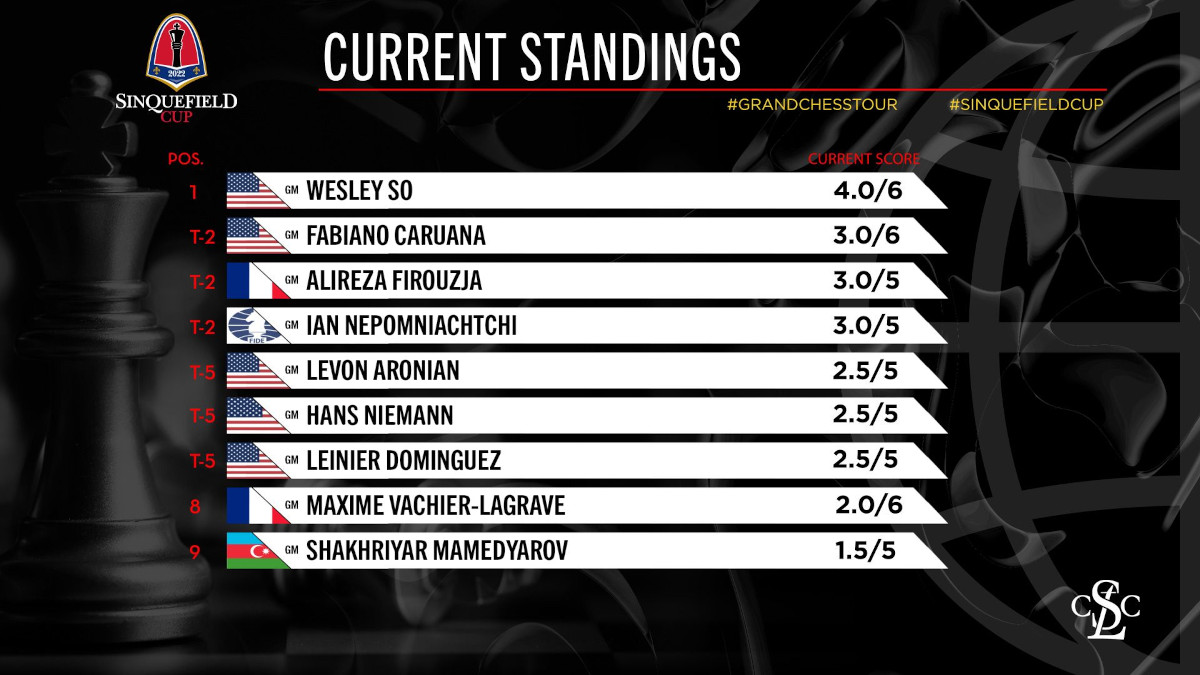
All games
Links
